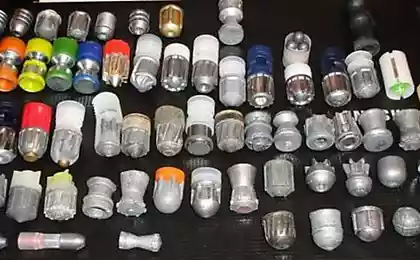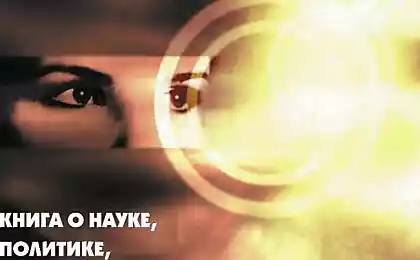646
The bullet-fool, the bayonet-done
All foreign military writers, historians and journalists, fiercely criticizing the army of the Russian Empire, has always paid tribute to the martial art that the Russian army had to perfection. This is the art of bayonet fighting, it our forefathers were not equal. This glorious military tradition is reflected in the aphorism aptly legendary general AV Suvorov "Bullet - a fool, the bayonet - well done", which proves the importance allotted bayonet fighting in the army of the Russian Empire.

Bayonet - a symbiosis of resistance, skills, fencing, unarmed combat and will to win. Known authoritative, military educator and theorist MI Dragomirov, characterized the reception of the military: "How would any gun at all, even 50 steps blunder likely than a bayonet on a step and a half; and in any case for the last steps we need much more courage, self-sacrifice, a sense of camaraderie than for firing a corresponding instinct of self-preservation. Shooting requires rest, hit a bayonet - forward, which in itself expresses our sense of superiority over the enemy. Exchanging fire for hours and did not achieve the bayonet again causes the enemy to the rear. " And even after the time bayonet in our country is given due consideration as training conducting this fight gives the personnel of special physical, psychological, technical skills and instilling the will to win, and the appearance in 1950 of a bayonet on the legendary Kalashnikov submachine gun speaks for itself .
Bayonet as a weapon first appeared in northern Spain in the second half of the XVI century, was called Bagineti and was used for hunting. In the battle-Bagineti bayonets were used in the years 1640-1641 in the French city of Bayonne, hence the name.

With the advent of small arms changed and combat training of armies to replace the peaks and spears, just came Bagineti the infantry and short guns in the cavalry. Small arms inflict significant damage only in the mass shooting at a short distance, and the approach of the course were started up in Bagineti and sword. New features of warfare using small arms from the soldiers demanded special skill and proficiency of fencing and unarmed combat. Pure bayonet was only effective when the unit could hold the line, if the order was violated in the course were old skills and techniques. In this battle the Russian soldiers, who held the traditional techniques of fist fights and cane had a distinct advantage.
It is a skilful combination of the military innovations, individual skills and fortitude of soldiers brought many victories of the Russian army.
For example, under Peter I in the war with the Swedes successful use melee attacks brought Russia bayonet victory in the famous battle of Poltava and in the battle of the Forest. When Suvorov man held the way from the very bottom to the very top and the very perfection owning all the basics of combat science, art bayonet was raised to an unattainable height for foreign armies.
Drinking Suvorov to-hand combat expressed winged phrases: "... Columns, bayonets, edged weapons, attacks, stroke ... -That's my reconnaissance." In Italy, it gives Bagration following lesson: "You sacrament pobieniya enemy forces machetes Belgardovym open, and to this triumphant attack diligently to the right; and wean from the Retreat. "
The famous Battle of Borodino to show the world the importance of Russian bayonets, fortitude and will to win of the Russian soldier. Bayonet in the Battle of Borodino played the same decisive role as the tank at the Kursk Bulge.

With the further development of small arms, with the advent of guns, Mosin rifle, pistol Smith & Wesson, melee-bayonet became replaced by fellow fired or combined with it. Nevertheless, bayonet and hand to hand combat were relevant in the infantry for a long time and brought quite a few victories in all subsequent wars.
They used a bayonet in the Russian-Japanese war of 1904-1905. and in the Civil War and the Soviet-Finnish in severe frosts, when the gun refused to shoot. During World War II used the bayonet much love from the penalty box and scouts, and in combined melee, in a lack of ammunition ability to Use a bayonet than once helped the Russian soldier.
Posted in [mergetime] 1363780753 [/ mergetime]
And even in our time when small arms are becoming more sophisticated all-new model of automatic weapons, from AK-74 and ending on the trunk of SVD have special tabs for attaching bayonet.
Bayonet requires incredible strength of spirit, strength and skills. Russian soldiers have historically deservedly considered the best in the bayonet. So, they had better not only training, but also the will to win the heroism and self-sacrifice, and for his comrades and for their homeland.
source
PS. One out of comments:
"Even trained people bayonet attached to the machine strikes fear and even terror, met as that with British soldiers in Yugoslavia, they really this were not ready and they had a horror of this turn of events as such and simply learning fight, but the fighting techniques ... so the bullet is good, but without a bayonet-knife oh how bad)) »

Source:

Bayonet - a symbiosis of resistance, skills, fencing, unarmed combat and will to win. Known authoritative, military educator and theorist MI Dragomirov, characterized the reception of the military: "How would any gun at all, even 50 steps blunder likely than a bayonet on a step and a half; and in any case for the last steps we need much more courage, self-sacrifice, a sense of camaraderie than for firing a corresponding instinct of self-preservation. Shooting requires rest, hit a bayonet - forward, which in itself expresses our sense of superiority over the enemy. Exchanging fire for hours and did not achieve the bayonet again causes the enemy to the rear. " And even after the time bayonet in our country is given due consideration as training conducting this fight gives the personnel of special physical, psychological, technical skills and instilling the will to win, and the appearance in 1950 of a bayonet on the legendary Kalashnikov submachine gun speaks for itself .
Bayonet as a weapon first appeared in northern Spain in the second half of the XVI century, was called Bagineti and was used for hunting. In the battle-Bagineti bayonets were used in the years 1640-1641 in the French city of Bayonne, hence the name.

With the advent of small arms changed and combat training of armies to replace the peaks and spears, just came Bagineti the infantry and short guns in the cavalry. Small arms inflict significant damage only in the mass shooting at a short distance, and the approach of the course were started up in Bagineti and sword. New features of warfare using small arms from the soldiers demanded special skill and proficiency of fencing and unarmed combat. Pure bayonet was only effective when the unit could hold the line, if the order was violated in the course were old skills and techniques. In this battle the Russian soldiers, who held the traditional techniques of fist fights and cane had a distinct advantage.
It is a skilful combination of the military innovations, individual skills and fortitude of soldiers brought many victories of the Russian army.
For example, under Peter I in the war with the Swedes successful use melee attacks brought Russia bayonet victory in the famous battle of Poltava and in the battle of the Forest. When Suvorov man held the way from the very bottom to the very top and the very perfection owning all the basics of combat science, art bayonet was raised to an unattainable height for foreign armies.
Drinking Suvorov to-hand combat expressed winged phrases: "... Columns, bayonets, edged weapons, attacks, stroke ... -That's my reconnaissance." In Italy, it gives Bagration following lesson: "You sacrament pobieniya enemy forces machetes Belgardovym open, and to this triumphant attack diligently to the right; and wean from the Retreat. "
The famous Battle of Borodino to show the world the importance of Russian bayonets, fortitude and will to win of the Russian soldier. Bayonet in the Battle of Borodino played the same decisive role as the tank at the Kursk Bulge.

With the further development of small arms, with the advent of guns, Mosin rifle, pistol Smith & Wesson, melee-bayonet became replaced by fellow fired or combined with it. Nevertheless, bayonet and hand to hand combat were relevant in the infantry for a long time and brought quite a few victories in all subsequent wars.
They used a bayonet in the Russian-Japanese war of 1904-1905. and in the Civil War and the Soviet-Finnish in severe frosts, when the gun refused to shoot. During World War II used the bayonet much love from the penalty box and scouts, and in combined melee, in a lack of ammunition ability to Use a bayonet than once helped the Russian soldier.
Posted in [mergetime] 1363780753 [/ mergetime]
And even in our time when small arms are becoming more sophisticated all-new model of automatic weapons, from AK-74 and ending on the trunk of SVD have special tabs for attaching bayonet.
Bayonet requires incredible strength of spirit, strength and skills. Russian soldiers have historically deservedly considered the best in the bayonet. So, they had better not only training, but also the will to win the heroism and self-sacrifice, and for his comrades and for their homeland.
source
PS. One out of comments:
"Even trained people bayonet attached to the machine strikes fear and even terror, met as that with British soldiers in Yugoslavia, they really this were not ready and they had a horror of this turn of events as such and simply learning fight, but the fighting techniques ... so the bullet is good, but without a bayonet-knife oh how bad)) »

Source:























